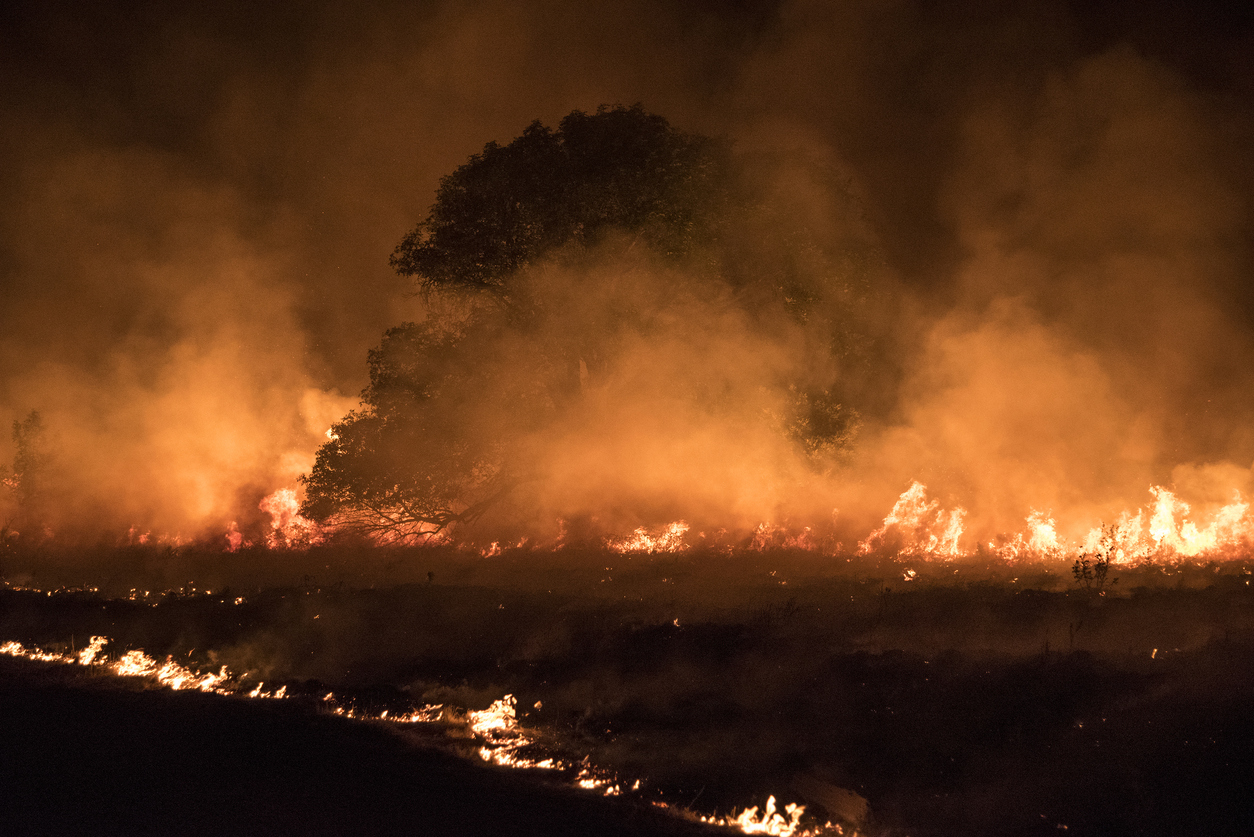The governor issued a report Friday outlining possible solutions for how costs for destructive wildfires will be covered, including a possible fund that utilities can tap into, that sent the clearest signal yet that the state will move to keep its power companies solvent. He called for legislation to be passed before lawmakers take a month-long summer recess on July 12, sending shares of PG&E and its peers soaring. It was made known two weeks ago that Newsom was also drafting plans to respond to wildfires more broadly, and his proposal has been expected.
The wide-ranging report gave Wall Street optimism that California will work with utilities to solve an intractable problem: who pays for wildfires as climate change threatens to make them deadlier and more frequent. Now, the task of developing a concrete approach falls to lawmakers, who need to work quickly as another fire season nears.
“There were a lot of positives for utility investors in the report,” said Travis Miller, an analyst for Morningstar Inc. Still, “the governor does have an aggressive timeline that might not match up with the timeline of other stakeholders.”
The stakes are high for utilities, which under California law are held responsible for fire costs if their equipment is found to be the cause, even if they weren’t negligent. San Francisco-based PG&E filed for bankruptcy in January, facing an estimated $30 billion in liabilities after two straight years of devastating blazes. Edison International’s Southern California Edison utility and Sempra Energy’s San Diego Gas & Electric have both seen their credit downgraded due to the risks and face junk status within months without a fix from the state.
“We all have a burden and a responsibility to assume the costs,” Newsom, a Democrat, said in a news conference Friday after the report’s release. As a result of the wildfires, he said, “We are in a very precarious state.”
PG&E jumped 21 percent to $23.08, its highest close since Jan. 24. Edison surged 7.2 percent, and Sempra gained 1.4 percent.
While he called for action to aid utilities, Newsom wasn’t shy in addressing PG&E’s culpability during a press conference. He raised the idea, on several occasions, of a possible government takeover should PG&E continue to be “bad actors” and “mislead” the state. Newsom noted that, in the report, “there is a word that drives shivers up people’s spines: It’s called municipalization.” And, he said, “If they don’t get it done. We will get it done.”
“We’ve heard and are embracing the calls for change,” PG&E said in a statement. “We are committed to resolving wildfire victims’ claims fairly and expeditiously, continuing to deliver safe and reliable energy to our customers, and supporting the state’s bold clean energy goals.”
Newsom’s report outlines policy options that include a catastrophic wildfire fund utilities could use for liabilities and a liquidity fund. It doesn’t make an outright recommendation on whether the state should kill its legal doctrine, known as inverse condemnation, that holds utilities liable for damages. But it does suggest that lawmakers consider changing the doctrine to a “fault-based standard” that would make utilities responsible if there was misconduct involved.
Also recommended in the report: Reform the California Public Utilities Commission that oversees power companies. “The state can take no options off the table” in the PG&E bankruptcy case, including municipalization of all or part of operations; breaking up PG&E’s territory into smaller markets; and focusing its operations on pipes and wires. Consider creating a state power-buying agency to backstop utilities. Weigh a liquidity fund that would provide bridge financing to pay for fire claims while regulators weigh whether ratepayers should pick up costs. Utility shareholders and ratepayers may pay for the fund. Explore a catastrophic wildfire fund that would help utilities immediately pay for damages if they face massive liabilities. Shareholders could contribute, and insurance companies would agree to cap claims.
Still, much work is left to be done if Newsom’s deadline is to be met. His team’s report recommended that a blue-ribbon wildfire commission, lawmakers and the governor’s staff continue to work over the next two months to develop a solution. Newsom’s party holds a super majority in Sacramento.
“It looks like he’s leaving all the heavy lifting to the legislature,” said Paul Patterson, a utility analyst at Glenrock Associates. “It’s easy to outline the questions, it’s much harder to come up with answers that are executable.”
Key lawmakers pledged to work with him, with Senate President Toni Atkins saying legislators will “dive into the details” of the report in the coming weeks. Advocacy group Consumer Watchdog meanwhile said a “PG&E bailout shouldn’t be buried in the fine print of legislative action.”
While California’s utilities rallied, Moody’s Investors Service said the impact on the companies’ credit remains to be seen. “The report represents concrete progress toward options for managing wildfire risk – a credit positive,” the ratings company said. While Moody’s said none of the report’s suggestions alone would mitigate utility risk, “combined, the strategies start to exhibit more promise.”
“At the end of the day, we need stability in our utilities to keep the lights on,” said California Assemblyman Chris Holden, who helped write legislation last year assisting utilities.
The Personal Insurance Federation of California said the state “should prioritize efforts to reduce fire risk, protect homeowners’ rights to recover damages, and create a special fund to address costs associated with utility-caused wildfires.”













